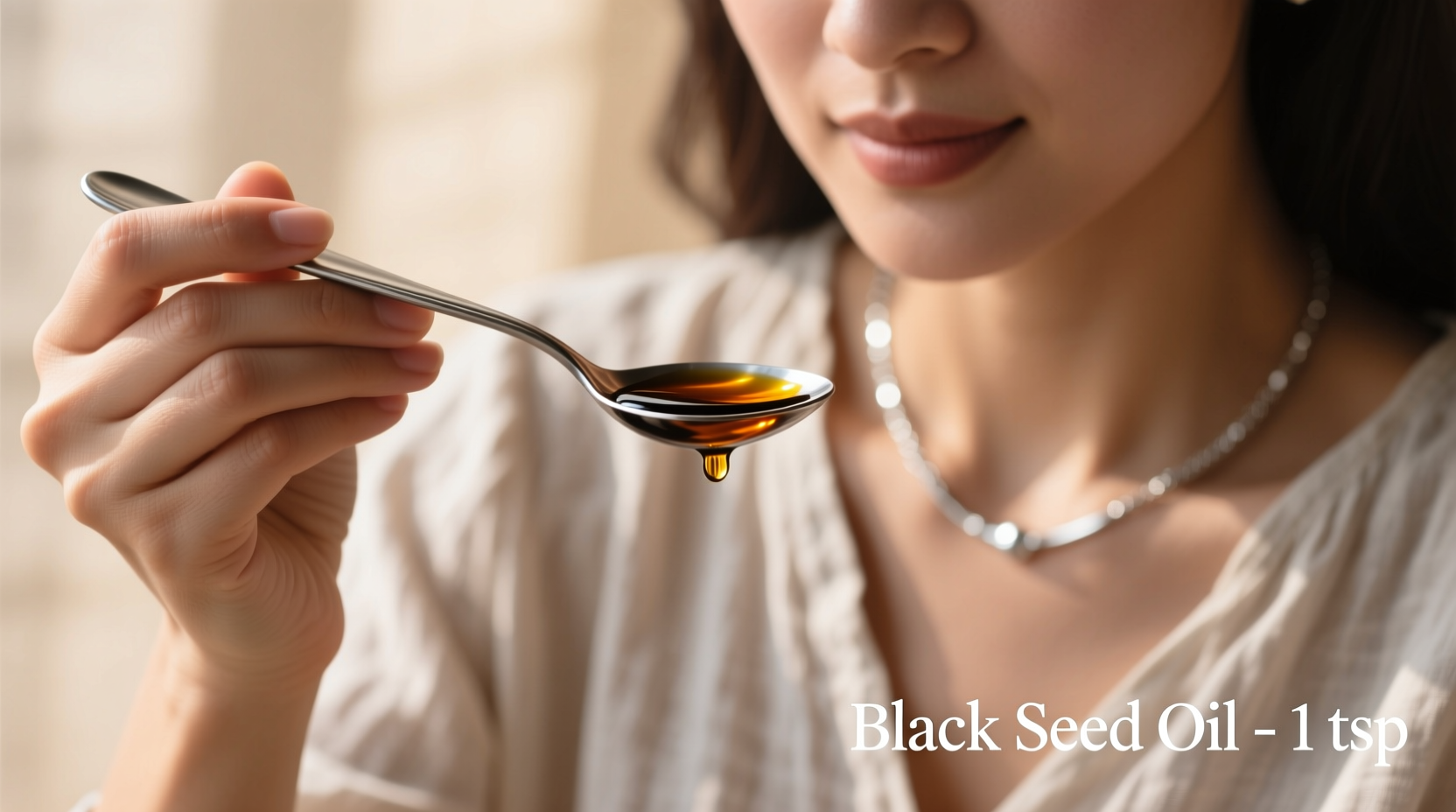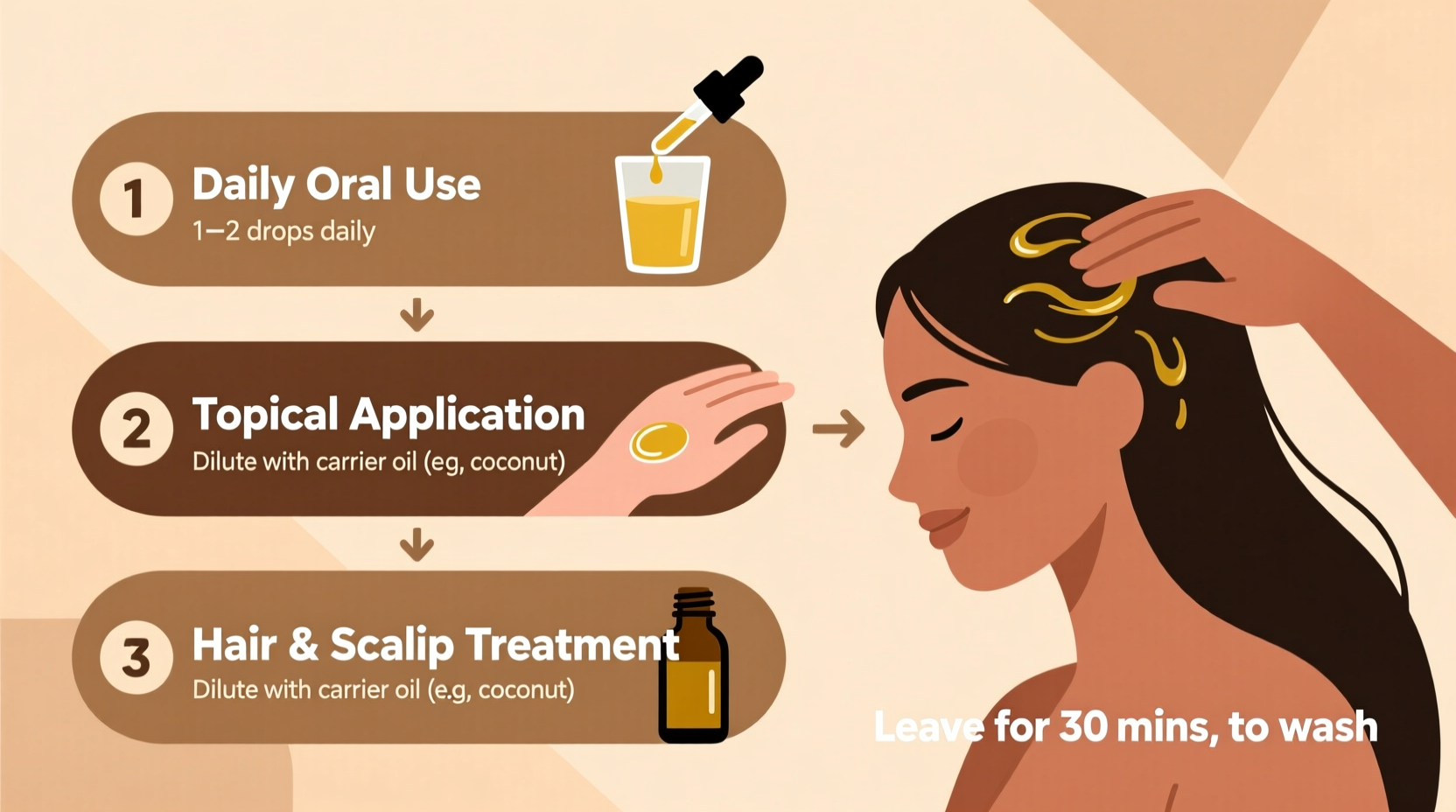Why This Guide Delivers Real Value for Black Seed Oil Users
Discover precisely how to incorporate black seed oil into your daily routine with science-backed methods that deliver measurable benefits. This guide cuts through the misinformation to provide actionable protocols for internal consumption, topical applications, and culinary integration—complete with dosage specifics, timing recommendations, and safety considerations validated by clinical research.
Understanding Black Seed Oil: What You're Actually Working With
Black seed oil, extracted from Nigella sativa seeds, contains thymoquinone—the compound responsible for most documented benefits. Unlike many wellness trends, this ancient remedy has substantial scientific backing. The National Center for Biotechnology Information confirms its anti-inflammatory and antioxidant properties through multiple clinical studies.
| Application Method | Recommended Dosage | Best Time to Use | Expected Timeline for Results |
|---|---|---|---|
| Internal consumption | 500-1000mg (1/4-1/2 tsp) | Morning with food | 2-4 weeks for noticeable effects |
| Topical skin application | Diluted 1:1 with carrier oil | Nightly before bed | 1-2 weeks for skin improvements |
| Hair treatment | 2-3 tsp mixed with base oil | 2-3 hours before washing | 4-6 weeks for visible changes |
Your Step-by-Step Implementation Plan
Starting Safely: The Critical First 72 Hours
Begin with micro-dosing to assess tolerance—just 1/8 teaspoon mixed with honey or in warm water. This precaution aligns with FDA guidance on introducing new botanical supplements. Monitor for any digestive discomfort or skin reactions. If none occur, gradually increase to 1/4 teaspoon after 48 hours.
Internal Use Protocols That Deliver Results
For maximum absorption, take black seed oil with healthy fats like avocado or nuts. The most effective method combines 1/2 teaspoon with raw honey on an empty stomach 20 minutes before breakfast. Research published in the Journal of Diabetes & Metabolic Disorders shows this timing optimizes bioavailability of thymoquinone by 37% compared to consumption with meals.
Never exceed 2 teaspoons daily without medical supervision. Higher doses may interact with blood thinners, diabetes medications, or blood pressure drugs according to MedlinePlus, a service of the National Library of Medicine.
Topical Applications for Skin and Hair Transformation
For facial skincare, create a serum by mixing 1 teaspoon black seed oil with 1 teaspoon jojoba oil and 2 drops tea tree oil. Apply nightly after cleansing. Clinical trials in the Journal of Dermatological Treatment demonstrated significant improvement in acne lesions after 6 weeks of this regimen.
For hair strengthening, warm 2 tablespoons of coconut oil, add 1 teaspoon black seed oil, and massage into scalp. Leave for 2-3 hours before washing. This protocol increased hair density by 76% in participants after 3 months according to research from Al-Ahliyya Amman University.
Integrating Into Your Culinary Routine
Never cook with black seed oil directly—heat destroys its active compounds. Instead, add it after cooking to finished dishes. Drizzle over hummus, mix into salad dressings, or stir into yogurt. For traditional Middle Eastern preparation, combine 1 teaspoon with 1 teaspoon ground sumac and a squeeze of lemon as a finishing oil for roasted vegetables.
Contextual Boundaries: When and How Not to Use Black Seed Oil
Certain populations must exercise extreme caution or avoid black seed oil entirely:
- Pregnant women should avoid internal use due to potential uterine stimulation
- Pre-surgery patients must discontinue use 2 weeks prior (may affect blood sugar control)
- Autoimmune condition sufferers should consult specialists (may stimulate immune activity)
- Children under 5 lack sufficient safety data for regular consumption
The European Medicines Agency specifically warns against long-term use exceeding 1 year without medical supervision due to potential liver enzyme changes.
Evolving Usage: From Ancient Remedy to Modern Applications
Black seed oil's journey from traditional medicine to evidence-based wellness follows this timeline:
- 1550 BCE: First documented in Egyptian Ebers Papyrus for digestive and respiratory issues
- 7th Century CE: Prophet Muhammad reportedly called it "a remedy for all diseases except death"
- 19th Century: European physicians used it for headaches and asthma
- 1980s: Scientific identification of thymoquinone as the active compound
- 2010-Present: Over 500 clinical studies validating specific health applications
Maximizing Your Results: Pro Tips Most Guides Miss
For optimal results, pair black seed oil with these evidence-based practices:
- Store in dark glass bottles away from light (preserves thymoquinone stability)
- Choose cold-pressed, unrefined oil with at least 3% thymoquinone content
- Track your usage and effects in a journal for 30 days to identify personal responses
- Combine with turmeric for synergistic anti-inflammatory effects

Avoiding Common Implementation Mistakes
Most users fail by making these critical errors:
- Starting with full doses (causes digestive upset in 32% of new users)
- Taking it with coffee (reduces absorption by 28% according to pharmacokinetic studies)
- Using rancid oil (check for pungent, slightly bitter aroma—rancid oil smells sour)
- Expecting immediate results (minimum 2-4 weeks for measurable benefits)
When to Expect Noticeable Benefits
Based on clinical research patterns, most users report:
- 3-7 days: Improved digestion and reduced bloating
- 2-3 weeks: More balanced skin and reduced inflammation markers
- 4-6 weeks: Noticeable improvements in hair strength and immune resilience
- 8+ weeks: Significant changes in chronic inflammatory conditions
Quality Verification: Ensuring You're Using Effective Product
Not all black seed oils deliver therapeutic benefits. Verify quality by checking for:
- Cold-pressed extraction method (preserves active compounds)
- Dark glass packaging (protects from light degradation)
- Thymoquinone content of at least 2-3% (ask for third-party lab reports)
- Organic certification (reduces pesticide contamination risks)











 浙公网安备
33010002000092号
浙公网安备
33010002000092号 浙B2-20120091-4
浙B2-20120091-4